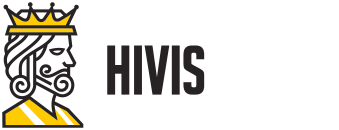Top 10 Industries That Require Employees to Wear Safety Vests
- 7 min read
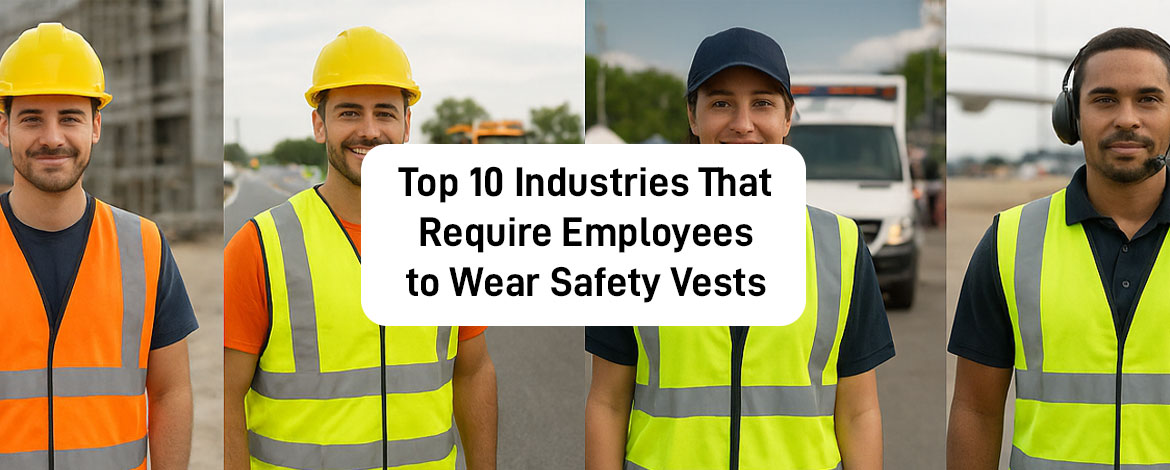
Every year, countless workplace incidents, many of which are preventable, stem from poor visibility. From construction zones to airport runways, high-visibility safety vests (also known as hi-visibility safety vests or reflective safety vests) serve as a critical form of personal protective equipment (PPE) to make workers more visible and reduce accidents.
Industries worldwide require these safety vests, mandated by OSHA, ANSI/ISEA 107, and various regulatory bodies. This article explains why safety vests matter, underscores their effectiveness with facts and regulations, and highlights the top 10 industries where they are mandatory.
Importance of Safety Vests
Workplace visibility isn’t a minor concern; it is lifesaving. In the construction sector, which accounts for a staggering one in five worker deaths, struck-by incidents are a constant threat. According to RCademy, “one in five worker deaths happens in construction.” Rcademy.
The Mix of Hazard Statistics-
1. Procore reports that of all fatal incidents in construction, 17% are struck-by incidents, while falls account for 35% Procore.
2. NIOSH data highlights about 150 deaths and 14,000 nonfatal struck-by injuries in the 2020 construction sector. This totaled nearly $1.4 billion in workers’ compensation costs, CDC Blogs.
These striking figures underscore how reflective safety vests can physically reduce risk by making workers visible to drivers, machine operators, or bystanders.
Regulatory Standards-
1. According to Wikipedia, ANSI/ISEA 107 classifies safety vests 1, 2, and 3, based on their visibility and the level of hazard exposure.
2. OSHA mandates high-visibility gear, particularly in construction and roadwork zones where visibility can mean the difference between life and death.
Top 10 Industries Requiring Safety Vests
The following are some of the industries where safety vests are essential-
1. Construction
Construction sites have hazards, such as moving vehicles, cranes, forklifts, and heavy machinery. Workers are often surrounded by blind spots where drivers may not see them until it's too late. That’s why construction safety vests are legally required under OSHA regulations.
High-visibility vests in fluorescent yellow or orange help reduce the number of “struck-by” accidents, which account for a significant percentage of construction site fatalities. In fact, OSHA’s guidelines specifically require Class 2 or Class 3 safety vests for roadside construction crews and other exposed workers.
2. Road & Highway Maintenance
Highway maintenance crews work in some of the most dangerous environments, just feet away from fast-moving traffic. Without reflective safety vests, these workers would be nearly invisible to drivers at night or in poor weather.
ANSI Class 3 vests, with more reflective tape and coverage, are often mandated for highway crews. Studies show that roadside safety vests drastically reduce the number of accidents involving traffic control personnel, flaggers, and paving crews.
3. Emergency Services
Police officers, firefighters, EMTs, and other emergency responders face unpredictable environments where visibility is crucial. Whether responding to a crash at night or directing traffic after a disaster, emergency service workers wear high-visibility safety vests to remain clearly identifiable.
For firefighters and rescue teams, reflective gear helps coordinate response in chaotic conditions. Law enforcement officers also use reflective vests during roadside checks, ensuring passing motorists can see them well in advance.
4. Event Security
Event staff and security personnel often manage large crowds at concerts, festivals, and sports arenas. A reflective safety vest helps distinguish them from attendees, providing instant identification and authority.
Event organizers also rely on safety vests for ushers, traffic directors, and gatekeepers to ensure smoother operations and safer crowd management. Bright colors make security personnel highly visible in emergencies.
5. Airport Ground Operations
Few environments are as high-risk as airport runways. Ground crews work around moving airplanes, service vehicles, and baggage carts while exposed to loud noises and limited communication.
To prevent accidents, airport workers are required to wear reflective safety vests at all times. These vests make ground personnel visible to pilots and vehicle drivers, especially during low-light conditions or poor weather. The Federal Aviation Administration (FAA) enforces strict requirements for airport safety vests as part of broader workplace safety regulations.
6. Railway Operations
Railway workers often perform maintenance on or near active train tracks. With trains moving at high speeds, visibility can mean the difference between life and death.
Federal and state regulations mandate railway safety vests to ensure track workers remain visible. Workers typically wear ANSI Class 2 or Class 3 vests with reflective striping that stands out against natural surroundings.
7. Utility & Engineering
Utility crews, including electrical, gas, pipeline, and telecommunications workers, frequently work near roadways, underground sites, or high poles. Their proximity to moving vehicles and heavy machinery makes utility safety vests essential.
Regulations often specify vest colors (like fluorescent green or orange) to distinguish different teams in shared worksites. These high-visibility garments also improve communication and coordination among engineers and contractors.
8. Warehousing & Logistics
Visibility is just as important inside warehouses as on roadways. Forklifts, pallet movers, and in-plant vehicles pose serious risks to workers on foot.
Warehouse safety vests help prevent collisions by ensuring workers are visible in dimly lit aisles or busy loading docks. Logistics companies often enforce strict PPE policies, requiring vests for both employees and visiting drivers.
9. Maritime, Dock, & Shipping
Ports, docks, and shipping yards are dynamic environments with cranes, trucks, and vessels constantly moving. Workers face the challenge of poor visibility due to fog, rain, or night operations.
Maritime safety vests combine high-visibility colors with reflective materials, making workers visible to ship operators and dockside vehicles. International naval regulations require safety vests for dock workers, crane operators, and cargo handlers.
10. Disaster Cleanup & Environmental Services
In the aftermath of natural disasters, cleanup crews face unstable structures, debris, and chemical hazards. Visibility in these chaotic environments is critical.
Disaster cleanup safety vests make workers visible to each other and help identify team leaders, safety officers, and volunteers. Environmental services also use reflective vests when handling hazardous waste, ensuring compliance with safety standards.
Industry-Specific Requirements
While all industries require safety vests, the specifications differ-
1. Construction & Road Work- ANSI Class 2 or Class 3 reflective vests.
2. Airport Ground Crews- FAA-approved safety vests with maximum reflectivity.
3. Railway Workers- Reflective gear with striping patterns for track visibility.
4. Event Security- Bright-colored vests for easy identification.
5.Warehouses & Logistics- Lightweight mesh safety vests for comfort indoors.
Depending on the hazards present, different industries may also require mesh safety vests, safety vests with pockets, or flame-resistant vests.
Proof of Effectiveness
The National Safety Council reports that high-visibility clothing reduces struck-by incidents by up to 47% in roadside environments. OSHA case studies also show a direct correlation between mandatory reflective safety vest policies and reduced accident rates.
Beyond statistics, real-world adoption proves the point—industries that enforce high-visibility safety vest standards experience fewer fatalities, lower insurance costs, and improved worker morale.
Wrapping Up
Safety vests may seem like simple high-visibility safety vests, which can often mean clothing, but they are among the most powerful tools in workplace safety. Whether in construction, emergency services, logistics, or disaster response, wearing a hi vis safety vest is often the difference between being seen and being in danger.
As industries continue to evolve, so do vest designs. New innovations are improving both compliance and worker protection, from mesh safety vests for comfort to flame-resistant reflective safety vests for hazardous work.
Employers must stay current with ANSI and OSHA safety vest requirements, while employees should take pride in wearing gear that keeps them safe. Ultimately, the bright colors and reflective strips of a safety vest represent more than compliance- they represent lives saved.
Every year, countless workplace incidents, many of which are preventable, stem from poor visibility. From construction zones to airport runways, high-visibility safety vests (also known as hi-visibility safety vests or reflective safety vests) serve as a critical form of personal protective equipment (PPE) to make workers more visible and reduce accidents.
Industries worldwide require these safety vests, mandated by OSHA, ANSI/ISEA 107, and various regulatory bodies. This article explains why safety vests matter, underscores their effectiveness with facts and regulations, and highlights the top 10 industries where they are mandatory.
Importance of Safety Vests
Workplace visibility isn’t a minor concern; it is lifesaving. In the construction sector, which accounts for a staggering one in five worker deaths, struck-by incidents are a constant threat. According to RCademy, “one in five worker deaths happens in construction.” Rcademy.
The Mix of Hazard Statistics-
- 1. Procore reports that of all fatal incidents in construction, 17% are struck-by incidents, while falls account for 35% Procore.
- 2. NIOSH data highlights about 150 deaths and 14,000 nonfatal struck-by injuries in the 2020 construction sector. This totaled nearly $1.4 billion in workers’ compensation costs, CDC Blogs.
These striking figures underscore how reflective safety vests can physically reduce risk by making workers visible to drivers, machine operators, or bystanders.
Regulatory Standards-
- 1. According to Wikipedia, ANSI/ISEA 107 classifies safety vests 1, 2, and 3, based on their visibility and the level of hazard exposure.
- 2. OSHA mandates high-visibility gear, particularly in construction and roadwork zones where visibility can mean the difference between life and death.
Top 10 Industries Requiring Safety Vests
The following are some of the industries where safety vests are essential-
1. Construction
Construction sites have hazards, such as moving vehicles, cranes, forklifts, and heavy machinery. Workers are often surrounded by blind spots where drivers may not see them until it's too late. That’s why construction safety vests are legally required under OSHA regulations.
High-visibility vests in fluorescent yellow or orange help reduce the number of “struck-by” accidents, which account for a significant percentage of construction site fatalities. In fact, OSHA’s guidelines specifically require Class 2 or Class 3 safety vests for roadside construction crews and other exposed workers.
2. Road & Highway Maintenance
Highway maintenance crews work in some of the most dangerous environments, just feet away from fast-moving traffic. Without reflective safety vests, these workers would be nearly invisible to drivers at night or in poor weather.
ANSI Class 3 vests, with more reflective tape and coverage, are often mandated for highway crews. Studies show that roadside safety vests drastically reduce the number of accidents involving traffic control personnel, flaggers, and paving crews.
3. Emergency Services
Police officers, firefighters, EMTs, and other emergency responders face unpredictable environments where visibility is crucial. Whether responding to a crash at night or directing traffic after a disaster, emergency service workers wear high-visibility safety vests to remain clearly identifiable.
For firefighters and rescue teams, reflective gear helps coordinate response in chaotic conditions. Law enforcement officers also use reflective vests during roadside checks, ensuring passing motorists can see them well in advance.
4. Event Security
Event staff and security personnel often manage large crowds at concerts, festivals, and sports arenas. A reflective safety vest helps distinguish them from attendees, providing instant identification and authority.
Event organizers also rely on safety vests for ushers, traffic directors, and gatekeepers to ensure smoother operations and safer crowd management. Bright colors make security personnel highly visible in emergencies.
5. Airport Ground Operations
Few environments are as high-risk as airport runways. Ground crews work around moving airplanes, service vehicles, and baggage carts while exposed to loud noises and limited communication.
To prevent accidents, airport workers are required to wear reflective safety vests at all times. These vests make ground personnel visible to pilots and vehicle drivers, especially during low-light conditions or poor weather. The Federal Aviation Administration (FAA) enforces strict requirements for airport safety vests as part of broader workplace safety regulations.
6. Railway Operations
Railway workers often perform maintenance on or near active train tracks. With trains moving at high speeds, visibility can mean the difference between life and death.
Federal and state regulations mandate railway safety vests to ensure track workers remain visible. Workers typically wear ANSI Class 2 or Class 3 vests with reflective striping that stands out against natural surroundings.
7. Utility & Engineering
Utility crews, including electrical, gas, pipeline, and telecommunications workers, frequently work near roadways, underground sites, or high poles. Their proximity to moving vehicles and heavy machinery makes utility safety vests essential.
Regulations often specify vest colors (like fluorescent green or orange) to distinguish different teams in shared worksites. These high-visibility garments also improve communication and coordination among engineers and contractors.
8. Warehousing & Logistics
Visibility is just as important inside warehouses as on roadways. Forklifts, pallet movers, and in-plant vehicles pose serious risks to workers on foot.
Warehouse safety vests help prevent collisions by ensuring workers are visible in dimly lit aisles or busy loading docks. Logistics companies often enforce strict PPE policies, requiring vests for both employees and visiting drivers.
9. Maritime, Dock, & Shipping
Ports, docks, and shipping yards are dynamic environments with cranes, trucks, and vessels constantly moving. Workers face the challenge of poor visibility due to fog, rain, or night operations.
Maritime safety vests combine high-visibility colors with reflective materials, making workers visible to ship operators and dockside vehicles. International naval regulations require safety vests for dock workers, crane operators, and cargo handlers.
10. Disaster Cleanup & Environmental Services
In the aftermath of natural disasters, cleanup crews face unstable structures, debris, and chemical hazards. Visibility in these chaotic environments is critical.
Disaster cleanup safety vests make workers visible to each other and help identify team leaders, safety officers, and volunteers. Environmental services also use reflective vests when handling hazardous waste, ensuring compliance with safety standards.
Industry-Specific Requirements
While all industries require safety vests, the specifications differ-
- 1. Construction & Road Work- ANSI Class 2 or Class 3 reflective vests.
- 2. Airport Ground Crews- FAA-approved safety vests with maximum reflectivity.
- 3. Railway Workers- Reflective gear with striping patterns for track visibility.
- 4. Event Security- Bright-colored vests for easy identification.
- 5. Warehouses & Logistics- Lightweight mesh safety vests for comfort indoors.
Depending on the hazards present, different industries may also require mesh safety vests, safety vests with pockets, or flame-resistant vests.
Proof of Effectiveness
The National Safety Council reports that high-visibility clothing reduces struck-by incidents by up to 47% in roadside environments. OSHA case studies also show a direct correlation between mandatory reflective safety vest policies and reduced accident rates.
Beyond statistics, real-world adoption proves the point—industries that enforce high-visibility safety vest standards experience fewer fatalities, lower insurance costs, and improved worker morale.
Wrapping Up
Safety vests may seem like simple high-visibility safety vests, which can often mean clothing, but they are among the most powerful tools in workplace safety. Whether in construction, emergency services, logistics, or disaster response, wearing a hi vis safety vest is often the difference between being seen and being in danger.
As industries continue to evolve, so do vest designs. New innovations are improving both compliance and worker protection, from mesh safety vests for comfort to flame-resistant reflective safety vests for hazardous work.
Employers must stay current with ANSI and OSHA safety vest requirements, while employees should take pride in wearing gear that keeps them safe. Ultimately, the bright colors and reflective strips of a safety vest represent more than compliance- they represent lives saved.
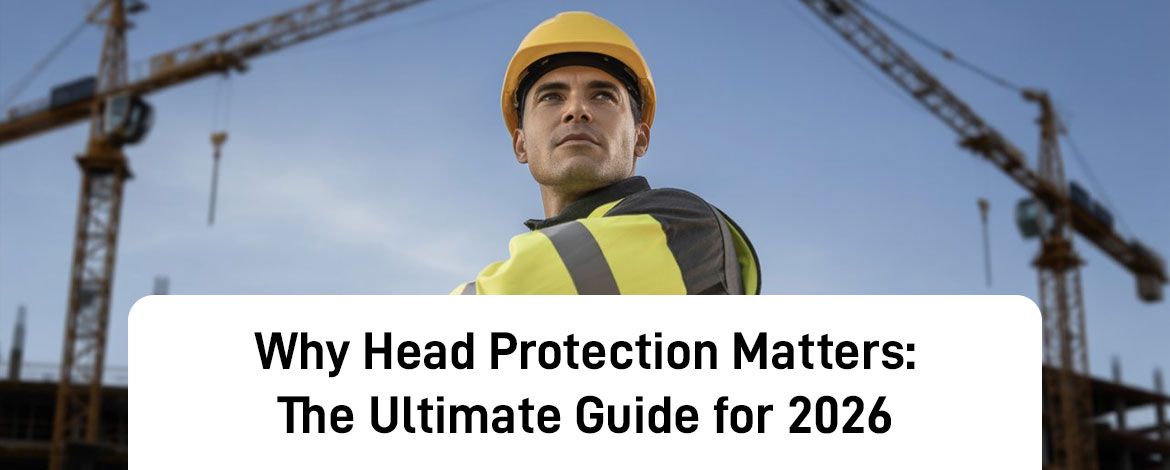
In a world where workplace safety standards continue to evolve, head protection remains one of the most essential forms of personal protective equipment (PPE).
- 17 min read
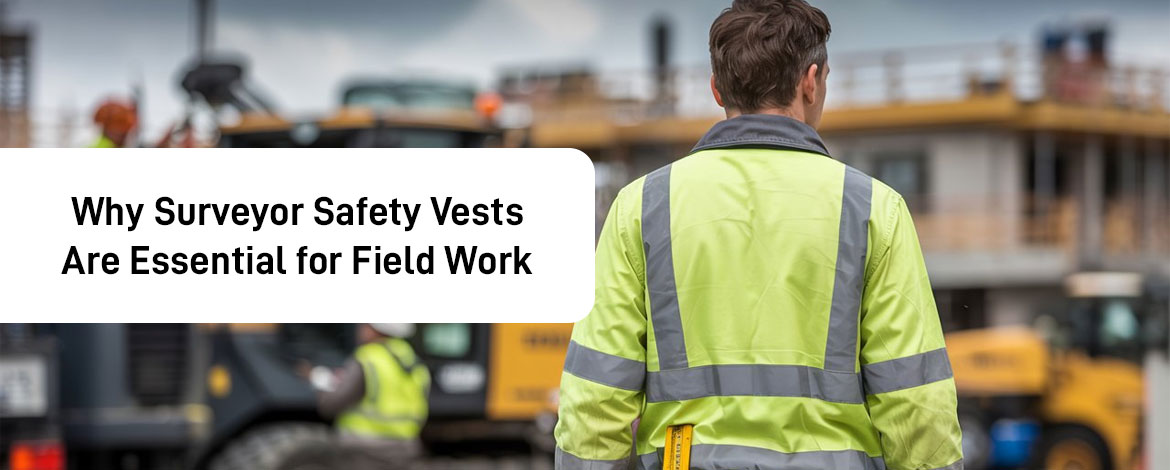
When working in the field, whether construction site, along a roadside, or in remote outdoor environments, visibility and safety are paramount.
- 10 min read
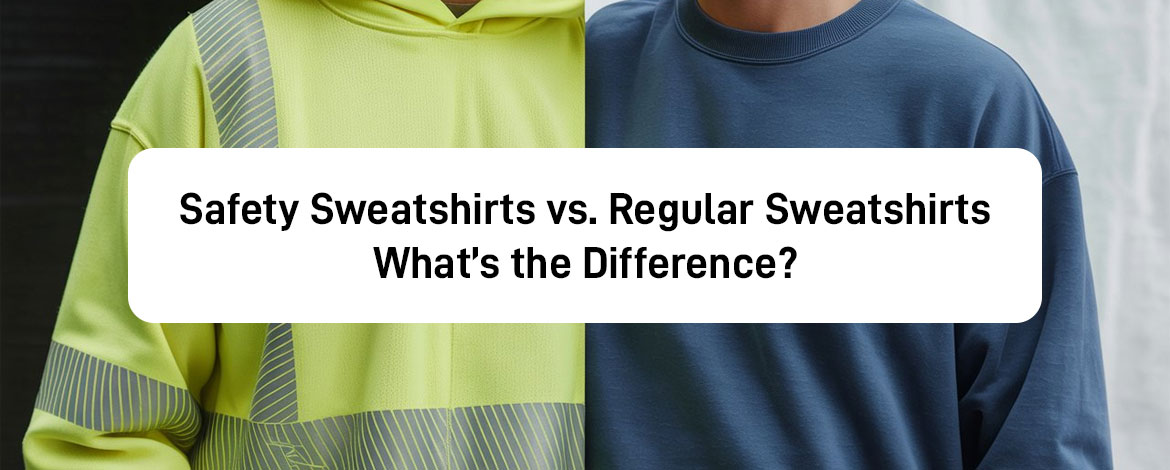
When the temperature drops, a sweatshirt becomes a daily essential for anyone working outdoors. But not all sweatshirts are created equal.
- 10 min read
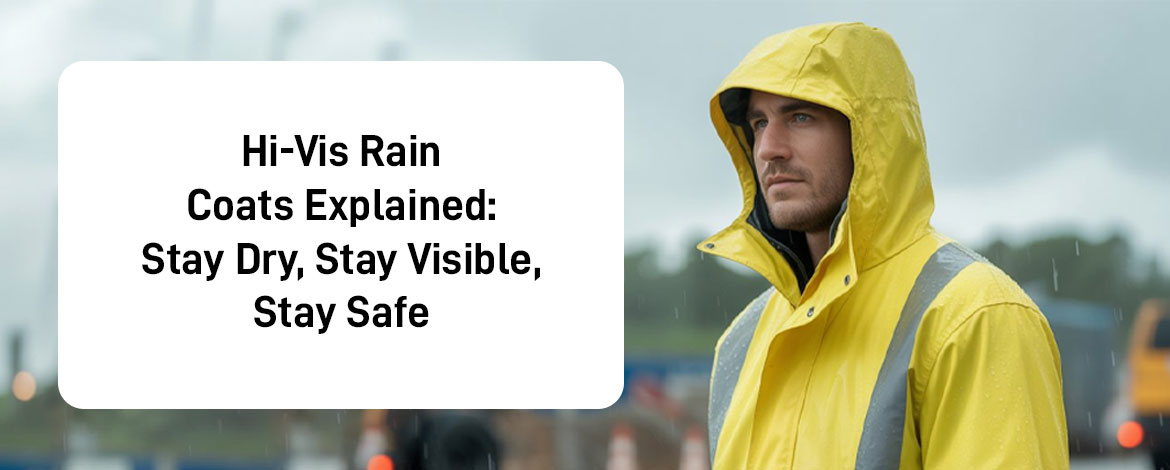
Staying protected on the job is more than just wearing proper equipment, it's about staying visible, comfortable, and safe in every possible weather condition
- 10 min read
